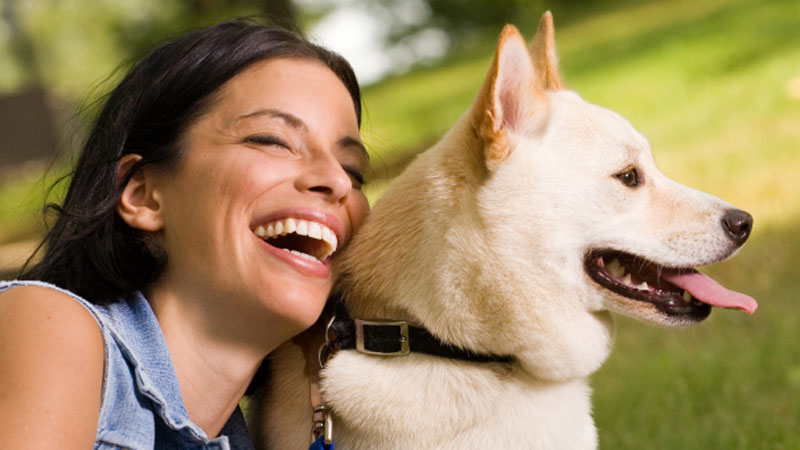Hip dysplasia
Hip dysplasia is a painful condition that results in one or both hip joints developing abnormally in a growing puppy. It is an inherited condition from one or both parents and is primarily (but not exclusively) seen in larger breeds.
The hip is a high motion ball and socket joint. The ball is the head of the femur (the long bone in the leg that connects the hip and knee joints) and the socket is part of the pelvis. These 2 surfaces normally fit together perfectly like a jigsaw to enable a good range of movement. Hip dysplasia occurs when these 2 bones don't fit snuggly together - sometimes the socket is too shallow, or the ball is an abnormal shape. This poor fit results in joint instability so there is abnormal movement leading to pain and swelling. Long term joint instability means there is abnormal wear on joint surfaces, so cartilage gets damaged and this results in arthritis.
Dogs will start to show symptoms around 5-6 months of age when there is rapid growth. It is more commonly seen in medium to large breed dogs. Rapid growth, being overweight and having too much exercise as a puppy can exacerbate the condition but not cause it.
Clinical signs vary from nothing to severe hindlimb gait changes. Dogs will often bunny hop so both hindlimbs move together. Difficulty getting up or down, stiffness or lameness is often seen. They may be less inclined to jump up into the car or on the sofa and be reluctant to climb stairs. A lack of interest in walks or wanting shorter walks maybe an indication.
On examination by the vet there may be obvious pain in the hip joints. They frequently have muscle wastage over the hips and thighs. There may be a reduced range of movement in the hip joints or some crepitus (creaking) when the joint is manipulated. If suspected, your vet will recommend an x-ray to diagnose the condition. This is done under sedation or general anaesthetic because the dogs need to be really still, and the hips are best radiographed with the dog on its back.
Methods used to treat hip dysplasia vary considerably on the degree of disease and pain associated with it. Weight control is of primary importance; any excess weight will put unnecessary strain on already damaged and unstable joints. Early introduction of joint supplements containing glucosamine and chondroitin can slow the onset of arthritis. If there is active inflammation and the dog is showing signs of pain, then non-steroidal anti inflammatories (NSAIDS) are the drug of choice. These can be used intermittently or long term if required and the majority of dogs tolerate them very well.
If HD is diagnosed early then exercise modification can be introduced to slow down progression of arthritis; jumping, skidding and excessive ball chasing should be discouraged. You can also train dogs to use a ramp to get into/out of the ca - the earlier this is introduced the easier it will be to train your dog to use it. Physiotherapy and hydrotherapy can help to keep pelvic and hindlimb muscles strong and also aid in weight management. Surgery is rarely required and involves a total hip replacement. It is major surgery and is reserved for very severe cases that cannot be managed medically.
Most dogs with HD can live long and happy lives with weight and exercise control and pain relief where necessary.


